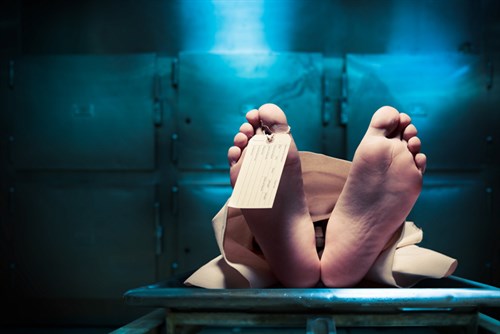If you ask a member of the general public what they think the role of a pathologist is, a high proportion will say that they perform post-mortem examinations (autopsies). Although this is true, autopsies represent only about 5% of the work of a histopathologist on average.

For forensic pathologists, autopsies comprise the majority of their work. Other histolopathologists spend most or all of their time in the care of the living, making diagnoses such as cancer. Although a very small part of the histopathologist’s role, autopsies are an important part of our practice; determining the cause of death helps both the family and clinicians understand the patient’s condition. Autopsies also further our knowledge regarding the mechanisms of disease, provide huge research opportunities, and make vital contributions to accurate national mortality data that underpins healthcare planning. In Great Britain, the majority of autopsies are carried out on the instruction of a Coroner (England, Wales & N Ireland) or Procurator Fiscal (Scotland). The main role of the Coroner is in the identification and investigation of unnatural deaths.
In your first 2 years of histopathology training, you are expected to engage with autopsy practice with the curriculum stating that you should perform a minimum of 20 each year. Autopsies are a fantastic way to learn your general pathology and revise your anatomy. You will receive training in how to perform a general examination of the body, eviscerate a body and also examine each individual organ system in order to formulate a cause of death. You never know what you may find and there are many occasions where interesting pathology is identified which was not previously known about. You may also need to take samples for histological review, or to be sent for toxicological analysis.

After the completion of the autopsy, is the pathologist submits a report to the Coroner. The report comprises a description of the relevant findings from the autopsy. It will also include a clinical-pathological correlation where you correlate the symptoms, signs or illnesses that the deceased was experiencing before they died with the pathology that you have identified at autopsy. Ultimately you should be able to explain the cause of death of the deceased. On the basis of the pathologist’s findings, the Coroner will then decide as to whether an inquest is required.
An inquest is not a trial; it is a process to establish the facts relating to a death. It is open to the public so anyone can attend. The role of the histopathologist is to present the findings of the autopsy to the court and to answer any questions that the coroner or the family of the deceased may have. Any histopathologist who performs autopsies will be a regular attendee at the Coroner’s Court.
After the completion of your ST2 year of training, autopsies are not a mandatory component and you can choose not to continue with them if you wish. Less and less histopathologists are choosing to continue with autopsy practice which is putting a significant amount of pressure on the service. However, some pathologists choose to become ‘autopsy pathologists’ where post-mortems are the mainstay of their work. There are also exciting changes that are currently taking place; imaging modalities including CT scans are being used in certain regions of the UK – if a cause of death can be identified on the scan it may only require a limited autopsy or negate the need for an autopsy at all. 
If you do choose to apply for histopathology training, or you are a current trainee, I would strongly urge you to consider maintaining your autopsy practice throughout your career. It is a very interesting, varied and important part of the job which we need to maintain.